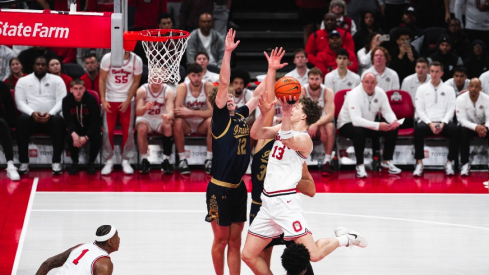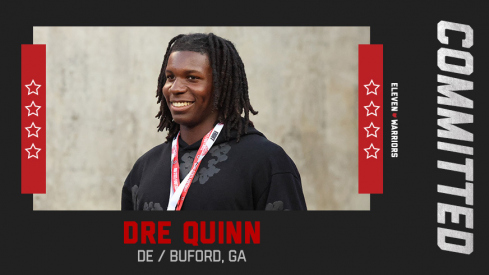Perhaps the most significant recent change in college football is the increased use of the no-huddle. Teams are paring down their playbooks, eschewing complexity in the name of running plays in rapid succession.
As I have previously discussed, the no-huddle is disarmingly simple to implement and demonstrates that a huddle serves little utilitarian purpose. It is perhaps not surprising that no-huddle teams were the leaders in most NCAA categories in 2012.
Standing Athwart History
Perhaps in response, voices are rising in certain quarters to slow down no-huddle, high tempo teams. The first such call came from the man currently atop the college football landscape – Nick Saban. Saban's concern was largely couched in player safety:
I think that the way people are going no-huddle right now, that at some point in time, we should look at how fast we allow the game to go in terms of player safety," Saban said on today's SEC teleconference. The team gets in the same formation group, you can't substitute defensive players, you go on a 14-, 16-, 18-play drive and they're snapping the ball as fast as you can go and you look out there and all your players are walking around and can't even get lined up. That's when guys have a much greater chance of getting hurt when they're not ready to play.
Yet Saban's concluding remarks perhaps demonstrates his real concerns:
It's obviously created a tremendous advantage for the offense when teams are scoring 70 points and we're averaging 49.5 points a game. With people that do those kinds of things. More and more people are going to do it.
I just think there's got to be some sense of fairness in terms of asking is this what we want football to be?
Brett Bielema recently added his voice in support of a rule change to slow down up-tempo offenses. Like Saban, Bielema claimed his concern was player safety:
Not to get on the coattails of some of the other coaches, there is a lot of truth that the way offensive philosophies are driven now, there's times where you can't get a defensive substitution in for 8, 10, 12 play drives. That has an effect on safety of that student-athlete, especially the bigger defensive linemen, that is really real.
Saban and Bielema's remarks beg the question – should the rules be modified to slow no-huddle teams – either out of a concern for player safety or to return football to how it "should" be played?
Structural Premise
The rules of football provide the offense and defense distinct advantages. Defenses have a numbers' advantage. By definition, the defense will have at least one unblocked defender – the counterpart of the offender holding the football. The offense, by contrast, commences the play and, as such, controls the tempo of play, substitutions and alignment. It is self evidently to the offense and defense's advantage to seek to maximize those structural advantages.
The no-huddle provides an offense the opportunity to do so. The offense can control and vary tempo (including playing fast) as well as preventing a defense from substituting. As Sonny Dykes states, the no-huddle works as a form of deception and constraint. Playing up-tempo limits the need to have a large number of plays and formations because the defense does not have time to recognize tendencies. The offensive players also benefit because they get increased practice reps and the opportunity to perfect the plays they do use.
To paraphrase Ohio State offensive coordinator Tom Herman's statement during a recent clinic, in third and short the Buckeyes are going to use "rocket" tempo and run either inside zone or power. The Buckeye coaching staff does not care if the other team knows those plays are coming because a) they are going go fast and b) they are so good at those base plays that they do not think a defense can stop them.
Do we have a problem?
Saban and Bielema assert the problem caused by such a fast pace is injuries. But the coaches do not cite evidence of an increase in injuries. If Bielema is concerned about injuries to bigger defensive linemen, he could also choose to play smaller individuals. One might also suggest that they show concern for large offensive linemen playing up-tempo.
The underlying concern seems to be a belief that up-tempo, no-huddle offenses are changing they way they believe football should be played. The problem, however, is that the idyllic version of football is in the eyes of the beholder. It does not seem a coincidence that Bielema and Saban do not use the no-huddle and the rule change they propose would force other teams to play their style. Tony Franklin, whose Louisiana Tech teams operated at perhaps the quickest pace in college football, was quick to offer a rejoinder:
The most hilarious thing about the timing of those (Saban's) comments is anybody who watched New England play Denver (Sunday). New England is the best offense in the NFL for one reason. They play like colleges do. They play no-huddle, fast-tempo, they change tempos and they do what they have to do to win. I think Belichick would probably disagree with his buddy.
It’s the great equalizer. People say Baylor can’t play defense. You know what? Before Art Briles got there, they couldn’t play offense, either, and they couldn’t win games. Now all of a sudden, Baylor can beat people because they can outscore people.
Obviously if you can line up and you’ve got better players than everybody else and play great defense and eat clock and win as many games as you can, that’s a great way of playing football, too. The problem is, 95 percent of us don’t have that type of talent to do that.
So when they fall into that trap of saying, ‘Here’s how Alabama has won championships. Here’s what we should do,’ to me, that’s the trap that Coach Saban would want everybody to fall into because, the reality of it is, he’s going to have better players most of the time.
It is so simple as to be unnecessary to say, but the way to succeed at football (or any sport) is to maximize your chances within the rules. Offenses have sought to control tempo within the play clock for as long as the game has existed. In fact, the huddle is a relatively recent addition to the game.
The modern huddle was largely introduced by Paul Brown. Before Brown, an offensive player generally called plays and huddles were largely unnecessary. Brown wanted to control his modern offensive system. He would use rotating guards to run plays in from the sidelines.
The huddle therefore is not how football has "always been played" but was instead an innovation to maximize the offense's ability to conceptually organize itself so as to dictate formation and alignment. The no-huddle is now popular because offensive coaches have discovered they can effectively call plays while gaining the no-huddle's advantages.
What the proposed rule change would do is significantly alter football's balance-of-power. It would take away one of the offense's structural advantages without altering those inuring to the defense. As Franklin indicates, it is perhaps not surprising that Saban – a defensive coach who generally has better talent than his opponent – seeks to take away an offense's strategic advantage. Calls to alter the rules to prevent up-tempo, no huddle offenses would perhaps be more convincing if they were not coming from coaches who would self-evidently benefit from the no-huddle's demise.

